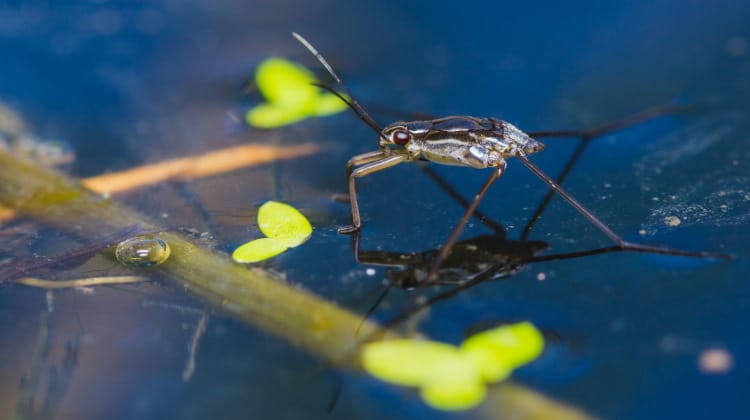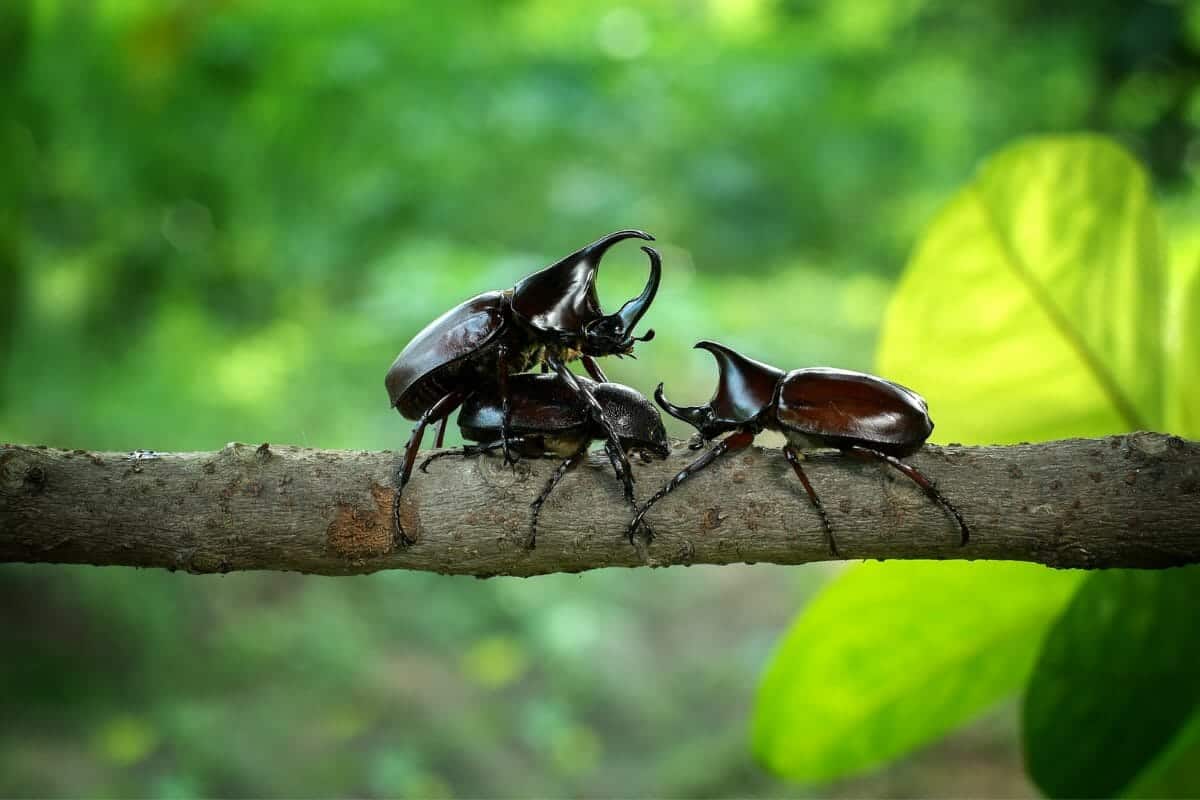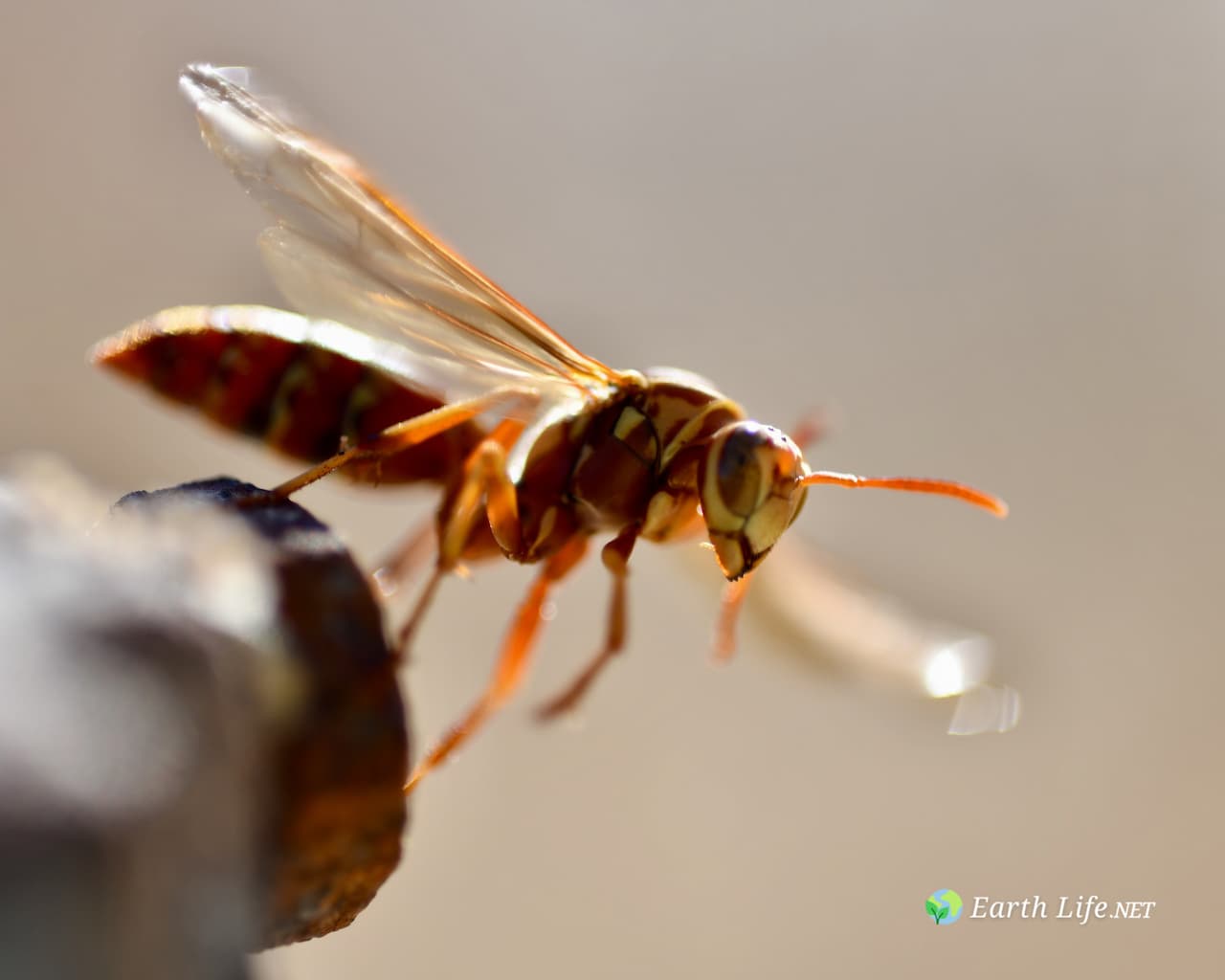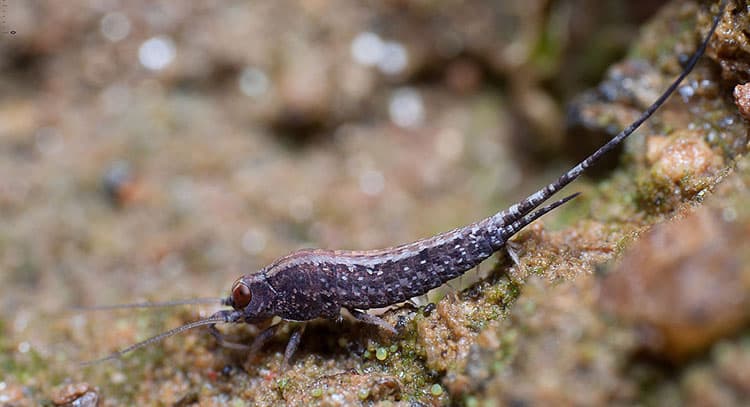Africanized Bees 101: What Turned Honey Bees Into Killers?
Apis mellifera scutellata, or Africanized honey bees as they are known, are native to the tropical savanna country of eastern and southern Africa (Rinderer 1986). They were imported into Brazil in 1956 to boost honey production (Kerr, 1967).
In Africa, A. mellifera scutellata, had been shown to produce up to three times as much honey as traditional European honey bees (Winston, 1992), which were less well- adapted to tropical regions of Brazil. Although there was concern about the aggressive defense stinging behavior, 26 colonies of African bees were brought to Brazil.
To address the problem of the aggressive behavior, hives or Brazillian bee keepers which contained the “new” bees were equipped with entrance screens (queen excluders) to prevent queens from leaving the hive and swarming. Some, however, did manage to escape and form feral or wild colonies which have spread at unprecedented speed, adapting to climates throughout a range of Central and South America, Mexico and now into southern parts of the United States (Winston, 1992), advancing into new habitats at rates of 300-500 km per year (Taylor, 1985).
Feral populations build up rapidly and in as little as 2-3 years following initial colonization it is not uncommon to find densities of 10 to 20 or more wild colonies per square mile (Taylor, 1985).
Tropical Africanized honey bees vs. temperate European honey bees
European honey bees are temperate bees while Africanized honey bees are tropical bees and their behaviors differ in several ways. European honey bees are adapted to withstand cold winters and periods of no foraging. They do this by storing honey to use to as food to generate heat throughout winters. During this time hive activity slows and there is no brood rearing and no foraging.
The thrust of European honey bees is to produce and store honey for these times. They build colonies in large nests inside of cavities to provide winter protection. These nests are rarely abandoned. In contrast, Africanized honey bees are tropical bees which have no need of winter honey storage. Their main energies go into honey production for reproduction.
Their nests are smaller and often external to cavities (Winston, 1992; Camazine and Morse, 1988). They can easily survive outside of their nests, and frequently hang on the outsides of the nests. When Africanized honey bees developed in African Savannahs, they were constantly faced with the threat of destruction from predators. By selection, they succeeded in developing ways to survive these threats, both as individuals and as colonies.
They have evolved three traits, in particular which have done much to further their survival (Benson, 1985). First, many of the returning foragers approach the hive and fly through the entrance at a high rate of speed. Entrances are very critical areas which render foragers quite vulnerable. By crossing this area quickly, they lessen the threat of being intercepted.
Second, Africanized workers, while foraging, move in quick, furtive patterns, rather than the more steady, systematic movements of European bees. Their course is composed of quick darting movements which resemble those of yellow jackets, more than European honey bees. This pattern of movements makes their courses much less predictable and the chances of their being intercepted in flight become less.
The third evolutionary advantage is the individual trait of immediately charging at a source of disturbance or threat. European honey bees, in contrast, will tend to cluster together and remain in the nest more than actively retaliate. This makes them easy targets for hungry predators. Not so Africanized bees. They immediately take flight and fly at the threat. Even queens involved in egg-laying are able to take flight. Workers gather around queens in swarms, and either attempt to repel the intruder or opt to leave the hive and abscond to a new nest site (Benson, 1985).
Small nests are more easily defended from predators, and in the event of nest invasion, not so much is lost by a small colony which can leave the site and start a new nest somewhere else.
Africanized honey bees reproduce frequently and rapidly. Eggs hatch into larvae in three days (Winston, 1992) in contrast to European honey bees which can take over a week to hatch. Larvae increase tremendously in size (900 times the weight of the egg in only four to five days), fueled by copious quantities of nectar and pollen supplied by adult workers (Winston, 1992). Mature Africanized honey bees are 10% smaller than their European counterparts (Winston, 1992).
Killer Bees: Aggressive nest defense behavior
Africanized honey bees have become legendary for their aggressive, stinging, nest defense behavior which has won them the media title of “Killer Bees”.
A study in Venezuela by the Entomology Department of Louisiana State University and the U.S.D.A. (Rinderer, 1986) showed several distinct defense behaviors and reactions in response to a disturbance of the colony. Enormously sensitive to the slightest disturbance, especially a jolt (Collins et al., 1988), an alarm was spread throughout the colony by a worker who immediately ran into the nest to recruit others by opening her sting chamber and extending her sting.
This released alarm chemicals which communicated the alert to other bees, particularly guard bees, who, in turn, spread the alarm to others and throughout the hive. Africanized bees have 5 times the number of guards in their nests as European honey bees (Rinderer, 1986). Approximately three times as many Africanized honey bees responded to the alarm chemicals as with European bees.
The result was the colony suddenly erupting, with angry bees pouring out to defend the nest and attacking anything that moved near it. The object of the disturbance was stung with a frequency eight to ten times more than European honey bees (Rinderer, 1986). The sting of the Africanized honey bee is very similar to that of the European honey bee. The difference comes in the numbers of stings an object receives (Winston, 1992).
Africanized honey bees produce a greater amount of alarm pheromone than European honey bees which incites other bees to attack. Bees can pursue a victim up to one mile and upon returning to the nest, can stay agitated for several days.
This highly aggressive behavior may have evolved in response to greater levels of predation (Schneider et al., 1992) or may be as a result of years of harvesting un-predictable resources (Rinderer and Hellmich, 1991). Other ideas suggested include variation among different colonies at different times of the year and different weather and humidity conditions (Rinderer, 1986; Southwick, 1990).
Different stages in development within the colony could also have an effect, such as less food at certain times and places, and preparation to swarm. Larger colonies with more at stake attacked more readily than smaller ones (Schneider and McNally, 1992), while colonies preparing to abscond with no brood rearing, not foraging and with less at stake were slower to attack.
It does appear, however, that this behavior is not a “set” behavior and intensity varies somewhat among colonies according to hybridization with European honey bees (Collins et al., 1988; Schneider and McNally, 1992).
Drone production and mating behavior
Africanized drones are produced in greater numbers than are European drones. They are smaller in size and posess large mucous glands which are thought to be an advantage in competition between European honey bees and Africanized honey bees for sperm deposition into the queens spermatheca (Rinderer, 1986).
In European colonies, drones are produced only until their numbers have reached a certain level. Production then ceases and drones remain in the hive until the season is over. In contrast, Africanized drones are produced continuously. At a certain age, they are forced out of the colony and replaced by younger drones. The older Africanized drones, present in ever increasing numbers, frequently drift into European colonies where they outnumber local drones and inhibit their production.
Soon they are mating with European queens in the nest and the result is proliferation of Africanized drones by European queens and Africanization of the the colony. Africanized males have an advantage over European males in part due to sheer numbers. Because there are so many out, they are present to produce broods, new drones, and swarms earlier in the season than European honey bees. This results in explosive population growth. Another advantage is their intense pursuit of each oppotunity for mating with European queens.
Each day during mating season, eligible drones in the region fly out to “drone congregation” areas to await the arrival of any virgin queens ready to mate (Camazine and Morse, 1988). A virgin queen ready to mate flies there and from 6-15 matings can take place in rapid succession.
The queen then returns to the hive with sufficient sperm for a lifetime of egg-laying. Africanized drones take full advantage of these meetings by arriving earlier and remaining later than European drones. They are able to aggressively exploit each mating opportunity with an overall succes rate which is very high.
Replacement of European queens by Africanized queens
European colonies are often taken over by Africanized queens which are swarming or have absconded. Takeovers are generally performed by a queen and a small swarm of workers, primarily to gain access to a proven nesting site, food reserves and a labor force of workers (Vergara et al., 1993).
Although primary targets for for takeover appear to be colonies which are queenless, have failing queens or are small (Rinderer and Helmich, 1991), Vergara (1993) determined that medium to strong colonies are also targets for invasion. The takeover is accomplished in two phases.
The first step is assessing the status or the colony and acquiring the resident colony’s odor. This is usually done in managed hives by the invading Africanized bees attaching themselves underneath the hive box near the entrance. After determinations are made and odors acquired, they are allowed, by mechanisms unknown, to enter the nest with little opposition.
Once inside the European queen is killed and the hive taken over (Vergara, 1993). This creates a considerable problem for keepers of European bees during periods of high swarming.
Excessive swarming
Africanized honey bees swarm at a rate far greater than European honey bees. Unlike the European bees who construct large nests for winter protection and storage of food resources, seldom abandoning them, Africanized honey bees, not needing winter storage, construct smaller nests. Most of their resources go toward reproduction and the rearing of young.
Africanized bees are smaller than European honey bees and swarm at a younger age. 100% of bees as young as eight days old will swarm in Africanized colonies, as contrasted to only 70% swarming of bees at the same age in European Colonies (Winston, 1992). Their numbers increase very rapidly and they soon outgrow the small nests. They typically produce six to twelve swarms per year (Camazine and Morse, 1988; Benson, 1985).
The record number of swarms in one year for European bees during one particularly favorable growing season was 3.6 swarms with an average of 1.0 to 2.6 swarms annually (Winston, 1992). One starting colony in French Guiana reportedly produced 60 new colonies (including offspring colonies) in one year (Winston, 1992). The annual growth rate of Africanized colonies is 16-fold per year compared with 3-fold for European honey bees (Rinderer, 1986).
Excessive swarming creates serious problems for beekeepers who are left with smaller, weaker colonies that do not collect as much honey (Camazine and Morse, 1988). This is the single most undesirable trait resulting from the takeover and Africanization of beekeepers of managed European honey bee colonies, although resource consumption by Africanized honey bees for the production of bees rather than stockpiles of honey is also a problem.
Absconding
Absconding differs from swarming in that colonies which abscond, do not leave behind a young queen, resources, or workers. The absconding colonies take everything with them and simply leave to establish new nests elsewhere (Camazine and Morse, 1988). Primarily a tactic of tropical races (Schneider, 1990), absconding has two forms, disturbance-induced and resource-induced (Rinderer, 1986). Africanized honey bee colonies are very sensitive to disturbances and absconding is an immediate response to a sudden deterioration within the nest cavity (Schneider, 1990).
Colonies will leave within a day to a week following the disturbance (Rinderer, 1986). The disturbance can be brought about by predation, fire, pest invasion, or overheating. The most susceptible time for absconding occurs as colonies establish recent nests. As colonies establish brood nests, the chances of disturbance-induced absconding are greatly reduced.
It is believed that absconding due to resource shortages takes place on a seasonal basis during distinct times of the year primarily when pollen and nectar flows stop or are greatly reduced (Rinderer, 1986; Winston, 1992). Factors influencing seasonal absconding are often unclear, however (Schneider, 1990).
Foraging behavior
Africanized honey bees are opportunistic foragers, in contrast to European honey bees, who participate in more group-type foraging with waggle dancers communicating locations of pollen and nectar sources. Although they too receive messages about the location of desirable foraging sites, Africanized bees are more solitary foragers.
They start foraging earlier in the day than European bees, and will sometimes forage late into the evening. Camazine and Morse (1988) relate an instance in which a worker was seen to return to the hive at 3:30 A.M. by the light of a moon that was less than half full. Africanized bees will be found foraging on cloudy, overcast days, in the cold, and even with light rain falling.
In conditions of plentiful nectar and pollen supplies, European honey bees with their group foraging techniques are better adapted. Africanized bees are more solitary foragers, however, and excel, when pollen and nectar are scarce and conditions adverse (Winston, 1992).
Next: Solitary Bees
REFERENCES
- Benson, Keith. 1985. The Africanized Honey Bee. Genetic Tactics of Survival. American Bee Journal. 125: 272-274.
- Camazine, S., R. Morse. 1988. The Africanized Honeybee. American Science. 76: 465-471.
- Collins, Anita M., H. V. Daly, T. E. Rinderer, J. R. Harbo, K. Holmer. 1994. Correlations Between Morphology and Colony Defence in Apis mellifera. Journal of Apicultural Research. 33: 3-10.
- Collins, Anita M., T. E Rinderer, and K. W. Tucker. 1988. Colony Defence of Two Honeybee Types and Their Hybrid 1. Naturally Mated Queens. Journal of Apicultural Research. 27:137-140.
- Guzman-Novoa, E., R. E. Page Jr. 1993. Backcrossing Africanized Honey Bee Queens to European Drones Reduces Colony Defensive Behavior. Annals of the Entomological Society of America. 86: 352-355.
- Kerr, W. E. 1967. The History of the Introduction of Africanized Honey Bees to Brazil. South African Bee Journal. 39: 3-5.
- Rinderer, Thomas E. 1986. Africanized Bees: An Overview. American Bee Journal. 126: 98-100; 128-129.
- Rinderer, Thomas., R. Hellmich, II. 1991. The Procecesses of Africanization. pp.95- 118. In M. Spivak, D. J. C. Fletcher and M. D. Breed [eds.], The “African” Honey Bee. Westview, Boulder, CO.
- Schneider, Stanley. 1990. Nest Characteristics and Recruitment Behavior of Absconding Colonies of the African Honey Bee, Apis mellifera scutellata, in Africa. Journal of Insect Behavior. 3: 25-240.
- Schneider, S. S., L. C. McNally, 1992. Colony Defense in the African Honey Bee In Africa. Environmental Entomology. 21: 1362-1370.
- Southwick, E. E. 1990. The Spread of Neotropical Honey Bees in the Americas by African Swarms. American Bee Journal. 130: 413-415.
- Taylor, O. R. 1985. African Bees: Potential Impact In the United States. Bulletin Entomological Society of America. 31: 15-24.
- Vergara, C., A. Dietz, A. Perez-de-Leon. 1993. Female Parasitism of European Honey Bees by Africanized Honey Bee Swarms in Mexico. Scientific American. 269: 84-90.
- Winston, Mark L. 1992. Killer Bees. The Africanized Honey Bee in the Americas, Harvard University Press, Cambridge, Mass.





